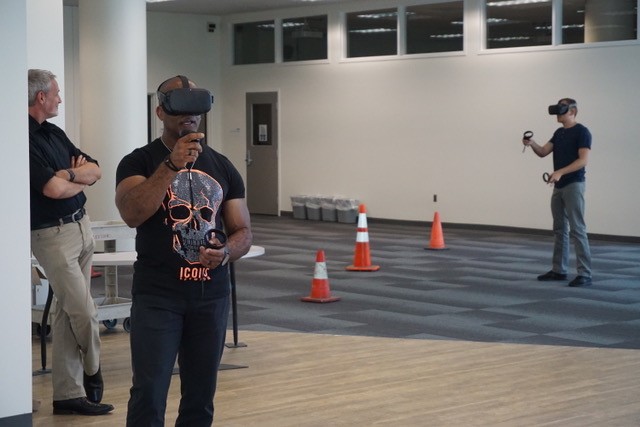A developing pilot project titled the “University of Arizona Extended Reality Initiative” aims to promote anti-racism using immersive experiences and augmented reality.
According to Bryan Carter, director of the Center for Digital Humanities and associate professor of Africana studies, the project uses two types of virtual reality. Participants are either immersed in a completely different world through headsets and 360-degree videography or engaged in an augmented reality, combining the real world with virtual objects.
Through digital storytelling, the project addresses systemic racism in institutions by relating the negative experiences of marginalized groups to others.
RELATED: UA women’s organization raising money to honor Ruth Bader Ginsburg on campus
“On issues related to anti-racism, it … makes sense to have someone walk in someone else’s shoes, so they can understand differently what that person’s experiences may be like and hopefully move people to some sort of change,” Carter said.
Sonja Lanehart, professor of linguistics at the University of Arizona, is another project team member focused on issues regarding language and identity. She applies her expertise in theoretical framework to the creation of practical scenarios. According to Lanehart, virtual reality and digital storytelling has the potential to teach people how to be not simply non-racist or bystanders but anti-racist and activists for change.
“For all new faculty or new students, … there needs to be a broader understanding of what anti-racism actually entails them doing, that [anti-racism] becomes part of the fabric of the University of Arizona and not just sort of an add-on,” Lanehart said. “You can’t just be a bystander and say, ‘Well, I’m not actively participating in it.’ This is something that requires action.”
Part of making the project effective is making sure the participants take the experience seriously and stay engaged. For example, in either scenario, participants will watch real, prerecorded actors instead of solely computer-generated objects.
During the session, participants will interact passively with the virtual reality, experiencing the scenario itself rather than actively responding to what happens around them. Afterwards, they will engage in a discussion about what they experienced, providing feedback as to how it may be improved.
Carter explained that one part of the immersive experience has the participant sitting in on their first department meeting as a new faculty member and encountering microaggressions. While waiting in the room, they hear whispers coming from the conversation of others. One whisper that the participant hears, through a technology known as ambisonic audio that allows for directional hearing, contains a derogatory statement.
According to Carter, while inside the immersive experience, the headset can also track eye movements. And if the participant wears a pulse meter, their heart rate can be measured, allowing their physiological responses to provide information about how the experience may affect them psychologically.
“Now imagine this scenario. … You are walking down the mall, you have a notification on your phone to scan the area … and finally, you see a police officer standing in front of you asking for ID, and regardless of how you respond, it’s never the right answer. You can imagine how that can sort of escalate based on some of the contemporary examples that we’ve had with police encounters,” Carter explained about augmented reality.
While developing these demo scenarios, the researchers are also working with other groups to create scenarios specifically for them. Currently, the project is in Phase 1, working on scripts, and the goal for Carter is to have several scenarios for diversity training at the UA in the fall and later on into classrooms.
Carter mentioned other team members including Cynthia Stokes, assistant professor of music and Joseph Farbrook, associate professor of art.
Carter said that the project can be used to not only understand other people’s trauma but to understand other cultures as well.
As an example, Lanehart described an idea of showing students at the UA what the land used to look like: “In the perspective of Native Americans, we could create a world that shows what that historical period looks like in the past and moving into the … present and future and create that within the context for people to better understand Native Americans, Native American land and space, community, culture, language etc. … You tell a different story than what we’ve always been told.”
Describing the project’s potential, Lanehart compared the project’s possibilities to the movie “Cloud Atlas,” which depicts the same two souls born and reborn into different people.
“What does that relationship look like over a period of time,” Lanehart said. “Because that’s what racism is. Racism is this 700-year-old experiment. … So it has a breadth and then the people that it impacts. Therefore, it has a depth to it. … You start with something small but you can create an entire world.”
Follow Sean Collins on Twitter









